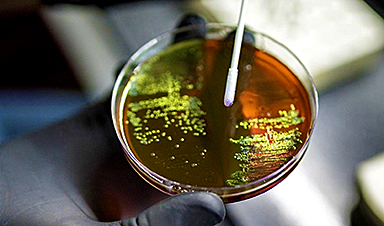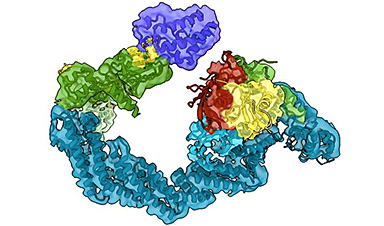There are currently 25 vaccines to fight COVID-19 in clinical evaluation, another 139 vaccines in a pre-clinical stage, and many more being researched.
But many of those vaccines, if they are at all successful, might not produce an immune response in portions of the population. That’s because some people’s bodies will react differently to the materials in the vaccine that are supposed to stimulate virus-fighting T cells.
And so just figuring out how much coverage a vaccine has, meaning, how many people it will stimulate to mount an immune response, is a big part of the vaccine puzzle.
With that challenge in mind, scientists at Massachusetts Institute of Technology on Monday unveiled a machine learning approach that can predict the probability that a particular vaccine design will reach a certain proportion of the population. That doesn’t mean they can guarantee its effectiveness, but the scientists’ work can aid in knowing up-front whether a given vaccine will have large gaps in who it can help.
The good news is, the MIT scholars have used their approach to design a novel COVID-19 vaccine on the computer that has far better coverage than many of the designs that have been published in the literature this year. They’re now testing the design in animals.
The bad news is, there could very well be large gaps in coverage of some of the existing vaccines already being explored by companies and labs, according to one of the authors of the report, David K. Gifford, who is with MIT’s Computer Science and Artificial Intelligence Laboratory.
“While they may protect more than 50% of the population, certain individuals and older individuals may not be protected,” Gifford told ZDNet in an email, when asked about vaccines currently under trial and in development.
The long path to a vaccine
Vaccines in development were not the direct subject of the work. Most of those vaccines are closed designs; no one knows exactly how they are composed. Instead, Gifford and colleagues designed vaccines from scratch, and then analyzed how effective they are, and extrapolated the findings to a group of vaccines whose composition is known.
Based on that, one can infer there might be problems with vaccines whose exact composition is not known.
It must be borne in mind that any in silico vaccine design such as the kind discussed here is only the beginning of a process that can take years to go through in vivo testing, in animals and then in humans, to establish both safety (non-toxicity), and efficacy, meaning that it actually confers a significant immune response.
But the work shows the ability of large computer models to dramatically speed up the initial work of searching through many, many possible combinations within a universe of possible ingredients, a search that can itself take years at the front end of a drug development pipeline.
This is the latest in large-scale, in-silico efforts against pathogens seen this year from MIT. Back in March, ZDNet reported on how MIT scientists used large-scale machine learning to search many combinations of compounds to come up with a novel antibiotic for a germ nothing else could kill.
Image Credit: Amanda Scott/Envato
Thanks to Heinz V. Hoenen. Follow him on twitter: @HeinzVHoenen
News This Week
The Global Nanomedicine Market: Key Players and Emerging Technologies in Healthcare
This article provides an overview of the global nanomedicine market, highlighting key players, emerging technologies, and the challenges and opportunities that influence its growth and commercialization in the healthcare sector. Nanomedicines are nanotechnology-based drug products [...]
Scientists Have Discovered Toxic “Forever Chemicals” in Bottled Water
Scientists have found toxic PFAS in drinking water samples from around the world, with higher levels in tap water from China compared to the UK. Boiling water or using a filtration jug can reduce [...]
Urban Microbes Are Eating Disinfectants – Are We Fueling a New Health Threat?
New research reveals that microbes in urban environments are evolving to withstand the very cleaning agents designed to eliminate them. The study also uncovers new strains in Hong Kong, previously only found in the [...]
Startling Study Shows High-Potency Cannabis Alters DNA
The study shows that frequent use of high-potency cannabis alters DNA, affecting genes related to energy and immune function. These changes differ between those with and without psychosis, suggesting cannabis use could influence mental health through biological [...]
New nanotherapy targets artery inflammation in cardiovascular disease
Inflammation of the arteries is a primary precursor and driver of cardiovascular disease—the No. 1 killer of people in the United States. This inflammation is associated with the buildup of dangerous plaque inside the [...]
Revolutionary Nanoparticle Therapy for Prostate Cancer
A groundbreaking research effort involving teams from the University of Virginia, Mount Sinai, the University of Michigan, the University of Texas, and others has displayed the clinical efficacy of an innovative therapy that utilizes nanoparticles and [...]
Antibody engineering drives innovation in drug development
Monoclonal antibodies (mAbs) are used to prevent, detect, and treat a broad spectrum of non-communicable and communicable diseases. Over the past few years, the market for mAbs has grown exponentially with an expected compound [...]
Breakthrough Study Reveals How Bladder Cancer Starts and Spreads
Researchers found that DNA mutations from antiviral enzymes and chemotherapy fuel early bladder cancer, while abnormal circular DNA in tumor cells drives resistance to therapy. These discoveries open new therapeutic avenues. A groundbreaking study led by [...]
AI and Quantum Mechanics Accelerate Drug Discovery
A recent article published in the Journal of Chemical Information and Modeling researchers at Southern Methodist University (SMU) have developed SmartCADD, an open-source virtual tool designed to speed [...]
Targeting ‘undruggable’ diseases: Researchers reveal new levels of detail in targeted protein degradation
Researchers at the University of Dundee have revealed in the greatest detail yet the workings of molecules called protein degraders which can be deployed to combat what have previously been regarded as "undruggable" diseases, [...]
Revolutionizing Virology: AI Discovers Over 160,000 New RNA Viruses
Largest discovery of new virus species sheds light on the hidden virosphere. Artificial intelligence (AI) has been used to reveal details of a diverse and fundamental branch of life living right under our feet and in every [...]
Cardiac Crisis: COVID-19 Doubles Risk of Heart Attacks, Strokes, and Death
Research indicates that COVID-19 survivors face doubled risks of severe cardiac events for years after recovery, especially if hospitalized. People with A, B, or AB blood types are particularly vulnerable, highlighting the need for personalized approaches [...]
AI steps into science limelight with Nobel wins
For long periods of its history, artificial intelligence has lurked in the hinterland of science, often unloved and unfunded—but two Nobel prizes in one week suggest its time in the sunshine has finally arrived. [...]
MIT Scientists Shed New Light on the Critical Brain Connections That Define Consciousness
A new study provides further evidence that consciousness depends on communication between the brain’s sensory and cognitive regions in the cortex. Our brains are constantly making predictions about our surroundings, enabling us to focus [...]
Common Chemicals Found in Shampoo and Plastic Could Be Quietly Disrupting Your Heart’s Rhythm
UC study of Fernald data links environmental phenols to heart toxicities Environmental phenols are present in numerous everyday consumer products, serving as preservatives in packaged foods, parabens in shampoos, and bisphenol A (BPA) in [...]
Revolutionary Brain Tech Offers New Hope for Stroke and Injury Recovery
University of Pittsburgh researchers report that deep brain stimulation (DBS) can effectively enhance motor functions in individuals with arm and hand paralysis due to brain injuries, with promising results from early human and monkey [...]






















